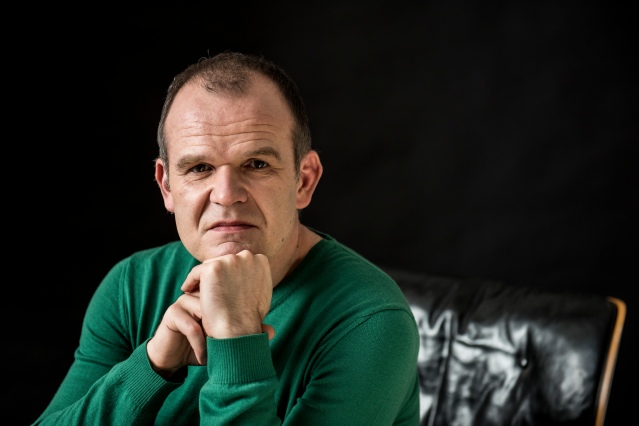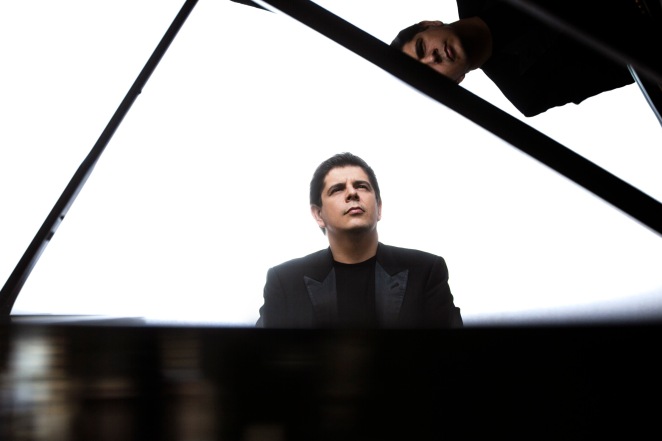Cleveland Orchestra
François-Xavier Roth, conductor
Javier Perianes, piano
Severance Hall
Cleveland, OH
February 28, 2019
Debussy: Rêve, from Première Suite d’Orchestre (orch. Manoury)
Ravel: Piano Concerto in G major
Encore:
Falla: Danza ritual del fuego, from El amor brujo
Stravinsky: Petrushka (1947 version)
An unexpected artist cancellation had the ancillary effect of morphing François-Xavier Roth’ Cleveland Orchestra debut program into a decidedly Parisian affair. Due to illness, violinist Patricia Kopatchinskaja was obliged to cancel her scheduled performance of Peter Eötvös’ Seven, a violin concerto written in memoriam the astronauts aboard the Space Shuttle Columbia – hopefully a work which can be programmed again in a future season. Spanish pianist Javier Perianes was on hand for the Ravel piano concerto instead, neatly complemented by works of Debussy and Stravinsky. The program change did little to derail Roth’s auspicious debut, a colorful portrait of Parisian musical life as the 19th-century gave way to the twentieth, and something of a pendant to Ingo Metzmacher’s program earlier in the season comprised of works of the same time period from Vienna.

Debussy catalogues had long indicated the existence of a Première Suite d’Orchestre dating from his student days, but it was assumed to be lost until as recently as 2008 when the score surfaced in New York’s Pierpont Morgan Library. Two extant versions of the four-movement suite were unearthed: a version for two pianos and a full orchestral score. The latter, however, was missing the third movement (Rêve) which was in due course orchestrated from the piano version by Philippe Manoury. While one might have wished for the entire suite to be performed, Rêve made for a fine opening selection as a standalone work. String tremolos and bubbling winds showed the present piece to be a clear precursor to La mer despite its youthful ambitions, with a lyrical theme (especially prominent in the oboe) taking its cue from the Romanticism of Debussy’s predecessors. An attractive piece – and a US premiere – with orchestration remarkably faithful to Debussy’s palette.
Credit is due to the orchestra administration to booking a first-class substitute in Perianes at short notice. Ravel’s Piano Concerto in G major was a vehicle well-suited to the pianist and a welcome addition to the evening (and parenthetically, Ravel’s other piano concerto, for left hand alone, was performed here almost exactly a year ago). Its striking whip crack opening was answered by a prominent piccolo, glittering glissandi on the keyboard, and ebullient trumpet, giving way to a bluesy, quasi-improvisatory theme in the piano. A wondrous texture from the harp led to the cadenza, bringing Perianes’ formidable technique in the spotlight. The Adagio assai opened sans orchestra, a heart-wrenchingly beautiful nocturne somewhat reminiscent of Satie’s Gymnopédies, made all the more affecting by the pianist’s lyrical phrasing and touch. A lovely flute passage ushered in the rest of the orchestra. Matters grew more impassioned, only to recede to delicate filigree in the piano in dialogue with the English horn. The finale was a wild toccata of bright colors and bursts of jazz, inevitably leading to demands for an encore. Perianes obliged in a solo transcription of Falla’s Ritual Fire Dance, with a slithery main theme growing to staggering virtuosity.

Stravinsky’s Petrushka, written for the Paris-based Ballets Russes in 1911, was presented in its 1947 revision which refined and clarified the orchestration. “The Shrovetide Fair” was awash with color, immediately pulling the audience in to a bustling street scene, with busy fragments of themes quickly shifting focus from one character to the next. The vigorous “Russian Dance” was a further highpoint, later reoccurring prominently in the piano. Piquant bitonalities, first appearing in the clarinets, displayed in no uncertain terms the conflicted duality of the titular puppet, while a fine trumpet solo from Michael Sachs offered some impish, folksy charm. The final scene returned to the opening fair at evening with textures even denser than as before. Shrill clarinets added to the dizzying array of colors, ominously predicting the puppet’s eventual death with the bitonal theme having the last word – now distant and disembodied, as if the post-mortem puppet was in ghostly dialogue with himself.
